Squad
UI / UX designer
What is Squad?
An iOS and Android app that allows you to locate your friends and stay connected at music festivals or concerts or anywhere you can easily be separated from your squad.
-
Using a P2P (Peer to Peer) network you can track your friends without being connected to the internet.
-
Uses minimal battery which is critical when you’re out all day. Allows users to select how often they share location, or simply only share location when necessary.
-
Create your “squad” at the beginning of your event or adventure and the app will automatically work in the background until needed. If you lose a friend simply swipe up on their name and the app will direct you to their location.
Team: I am in the process of designing and developing this app myself.
Overview of problem and goals
Problem: At large events your friends are critical to your experience, however, it's easy to lose track of each other in the crowds. Due to overloaded networks it’s impossible to get reliable service, limiting your ability to contact and locate your friends.
-
Large Crowds
-
Overloaded networks
-
Limited Smartphone battery life
-
GPS needed for locations but heavy reliance on the internet and battery drain
Solution: Create a simple, easy way for friends to stay in contact at large events despite lack of cell service, while conserving battery life.
Research
Confirming the Need: I started by informally surveying friends, and 30 out of 30 of them had been separated from their “squad” at large music festivals like Coachella, Outside Lands, and Hard Summer.
-
They were frustrated by how much time they wasted looking for each other and several people explained that they were “worried” or “scared” while alone.
-
29 of 30 said of them said they could not get cell coverage to make a call or send a text.
-
Surprisingly, 20 out of 30 said that being at the event with friends was the most important part of the experience. The other 10 said that the artists were most important.
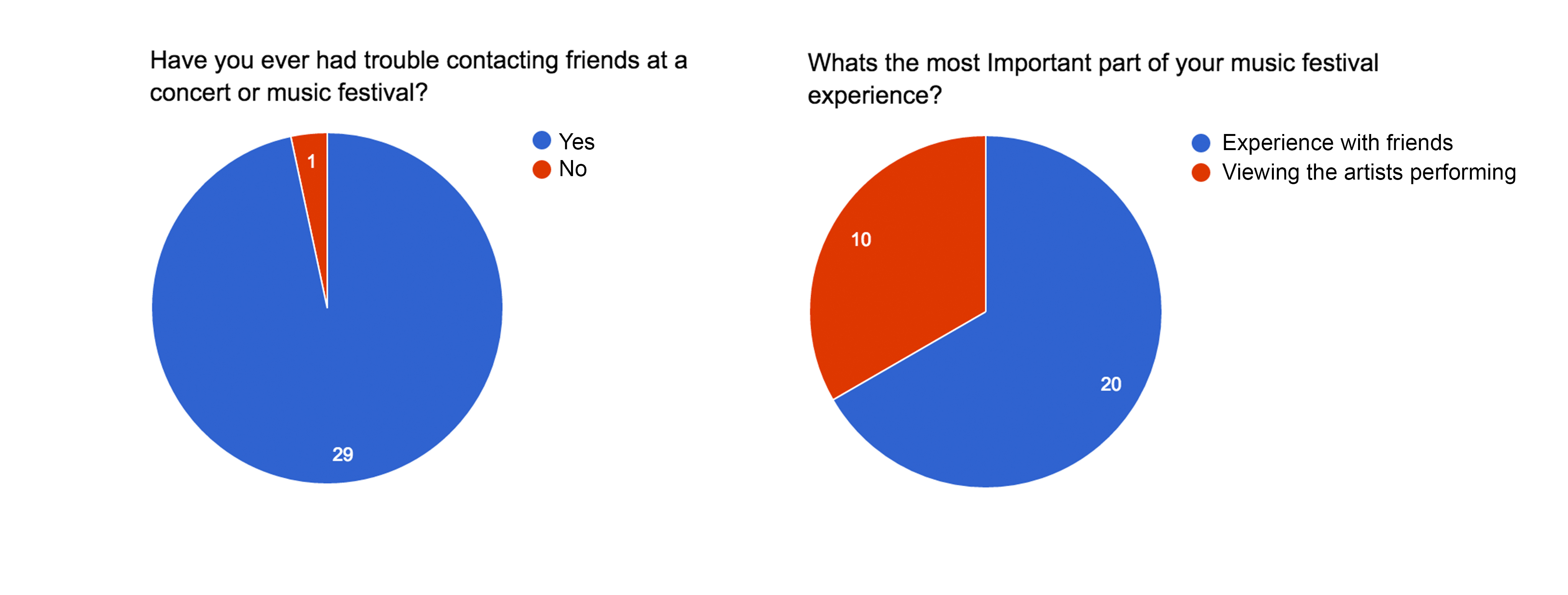
Researching the connectivity issue revealed many articles that recognize how often people are separated at these events and have trouble locating each other.
Most recommend the low tech solution of setting a meeting point in advance, remembering what your friends are wearing or planning out your schedule ahead of time.
In an article documenting “Survival Tips for Coachella” they specifically outline the following recommendations:
-
"Save your cell phone. When not in use, power it down or turn off the internet to conserve battery. Charging stations will be few and far between, and reception will be close to non-existent, anyways."
-
"Speaking of no reception, create obvious meeting spots and times for your group. With thousands of people roaming the grounds, chances of separation are higher than high. Coachella-goers of years past recommend meeting at one of the festival’s massive art installations that are easy to spot and less crowded than a tent."
Source: San Diego Tribune
Beyond just Coachella, there are similar articles talking about this same problem at all the major music festivals. Here’s another example written about Outside Lands.
-
"Around 50,000 people attend the festival each day. It’s easy to get lost, and hard to find people. Designate a meeting spot that isn’t in a high traffic area (e.g. the windmill) or out of ear range of a stage. The swarms of people mean you’ll have limited cell reception, so use email to communicate"
-
Source: SF Critic
Overcoming Connectivity Issues:
The overloaded networks prevent reliable use of cell phones at these large events. After researching several alternatives to work around the connectivity issue, I discovered a company called OpenGarden http://opengarden.com/home/ which uses a peer-to-peer wireless mesh network to connect mobile devices, without requiring any internet connectivity. This is done using using a created WiFi network and Bluetooth LE. Their app, FireChat, is a mobile messenger that uses the technology that I’m currently testing. This technology works for both iOS and Android (Android 4.0 and Above).
I plan to use OpenGardens MeshKit as the backend for Squad. More info:http://opengarden.com/partners/
GPS Solutions: The GPS function required to pinpoint you and your friends’ locations is problematic because it relies on an internet connection. To solve this issue, I discovered the alternative of offline GPS. To build your Squad, everyone will need to download the map prior to the event and send their initial locations. With the offline use of the maps, they can continue to track each other based on distance from their initial starting points.
Addressing battery life concerns: By taking the GPS offline and using P2P networks, we are reducing the battery needed to for Squad to function.
-
I research batterylife of bluetooth vs gps and found that Bluetooth uses less energy than GPS which is an important consideration when trying to save battery. According to Nordic Semiconductor: Bluetooth Low Energy by comparison with GPS, with peak currents as low as 12.5mA and average currents down to 9μA, consumes far less. (nRF8001 - Nordic Semiconductor).
Application Design
Initial Sketches: 8 of the people who responded to my surveys said they were “scared/worried” or “uncomfortable” while looking for their friends. To help make the process of finding your lost friends less scary I really wanted the applications overall design to feel very playful.
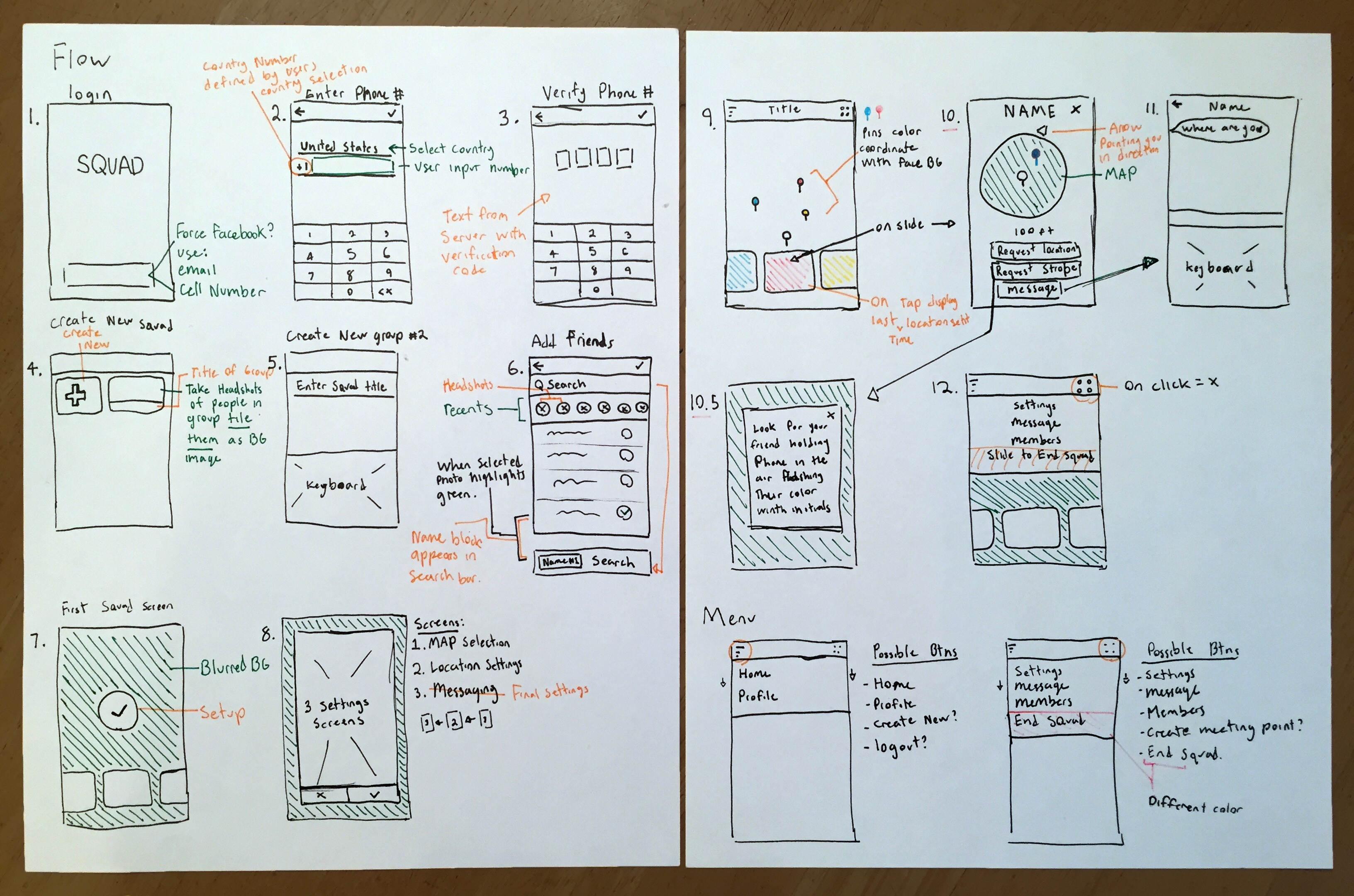
Setup Screen / Onboarding: Setting up your squad is one of the most important parts of the application because it allows for the application to function correctly. Also, if designed poorly could seem tedious and turn users away. I narrowed it down to two options:
-
A set of overlay cards with individual setup options on each.
-
Two full screen setup pages.
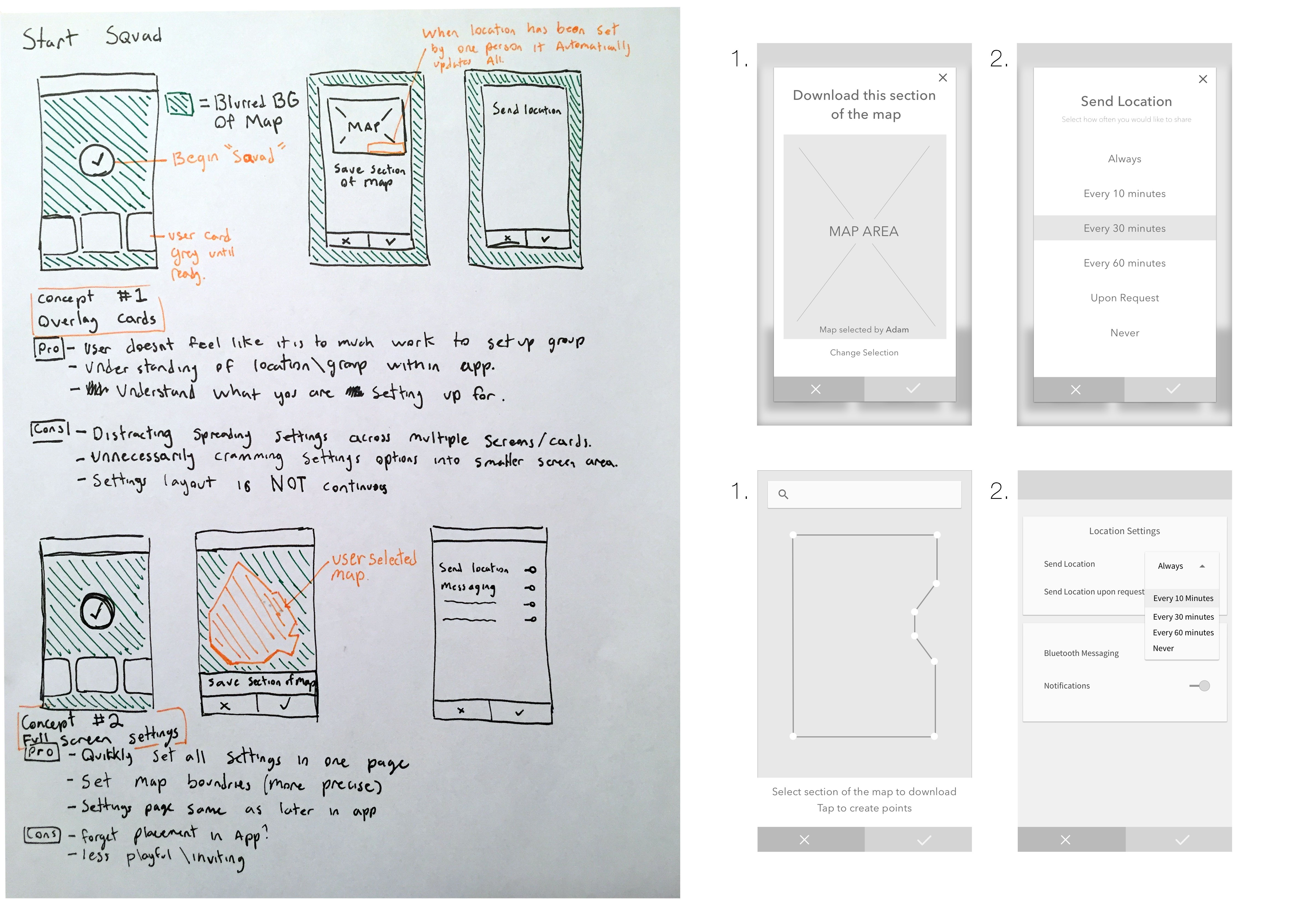
Information Architecture:
I learned through mock tests that the average user would be using the application while moving and will most likely be in a distracting environment. This just emphasized the importance of simplicity. I needed to make all of the content easily read / understood at a glance and I needed to make all of the gestures and buttons easily accessible.
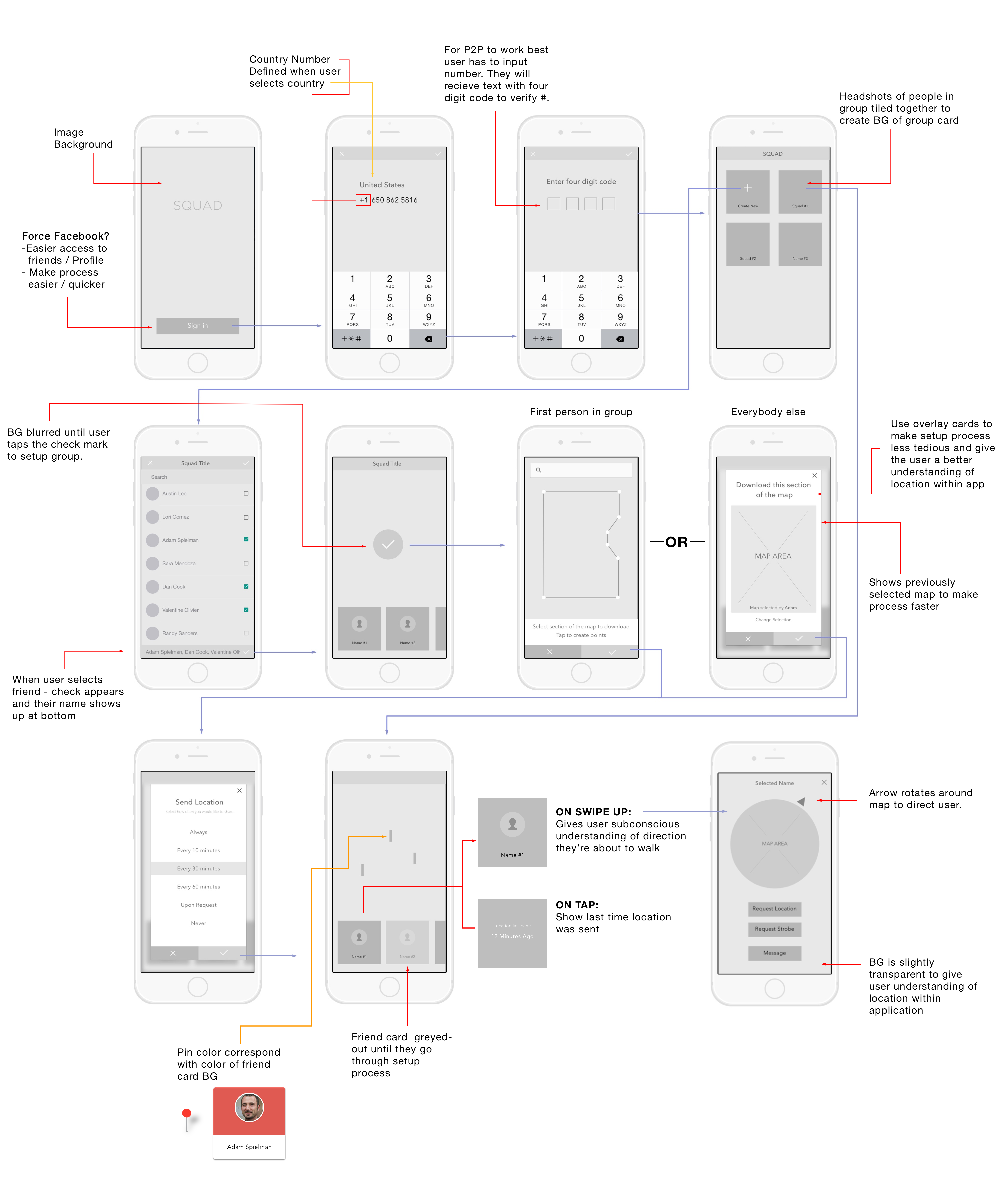
Personas:
I created different personas to understand the type of person I was designing for. This helped especially in situations where the application varied based upon the user number.
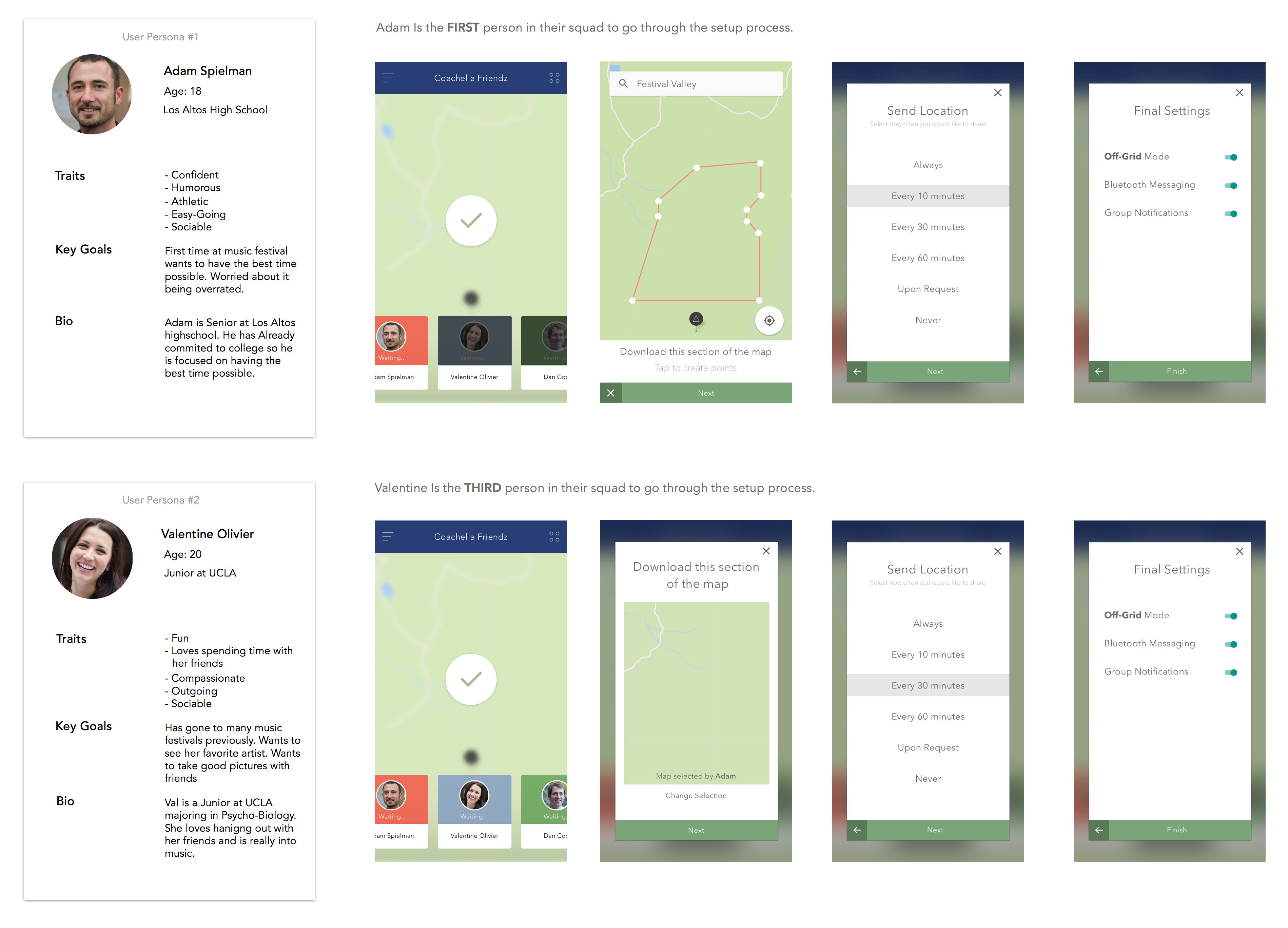
High Fidelity Mockups:
I wanted make the app feel young and playful. To accomplish this I used light colors. I also felt a colorful interface replicated the artistic and colorful environment of music festivals.
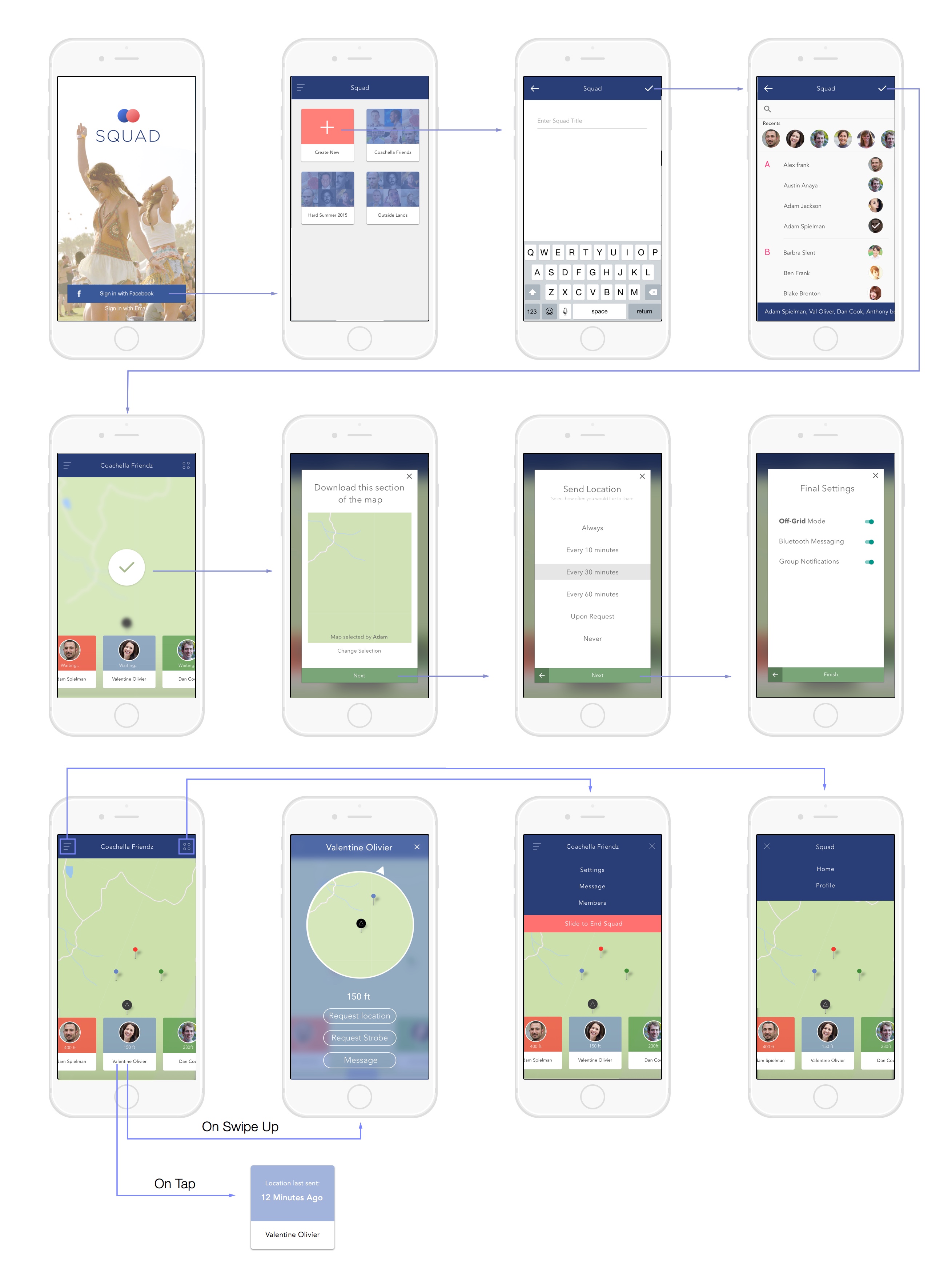
Prototyping:
The application overall was very elegant and sleek. I wanted to animate the transitions to make the process feel more playful and less tedious. The Prototypes were made using Principle.
Challenges:
When designing for a distracting environment, simplicity is key. I had to make sure everything was easily understood at a glance. I had some difficulty removing unnecessary features especially in the menu and the main tracking page. My first iteration used only headshots which I realized became difficult because they were too little for some people to see, especially at glance. My initial menu system was very traditional but I realized removed the user from their location in the app and felt too different.
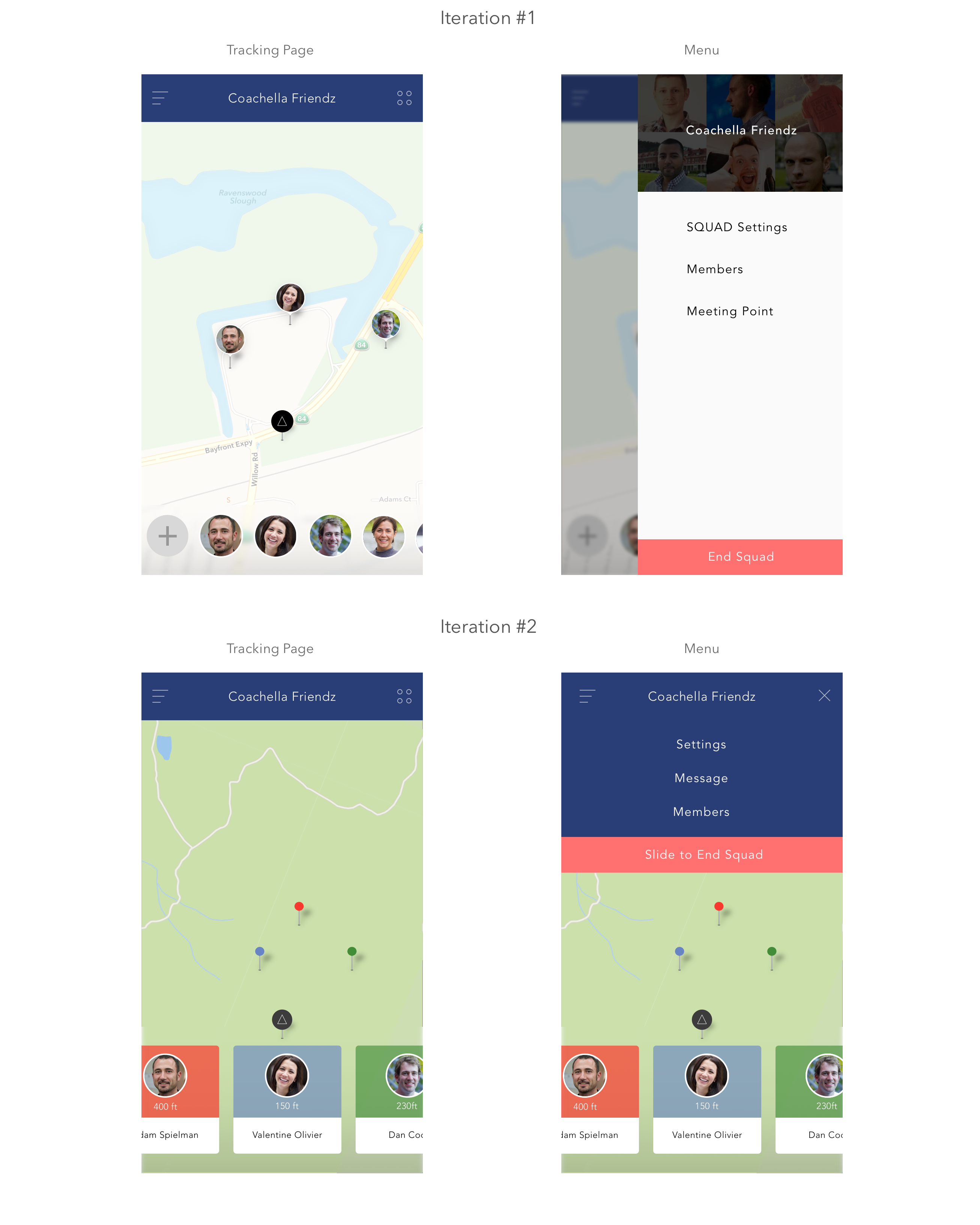
Video Source: Goldenvoice